Archives
-
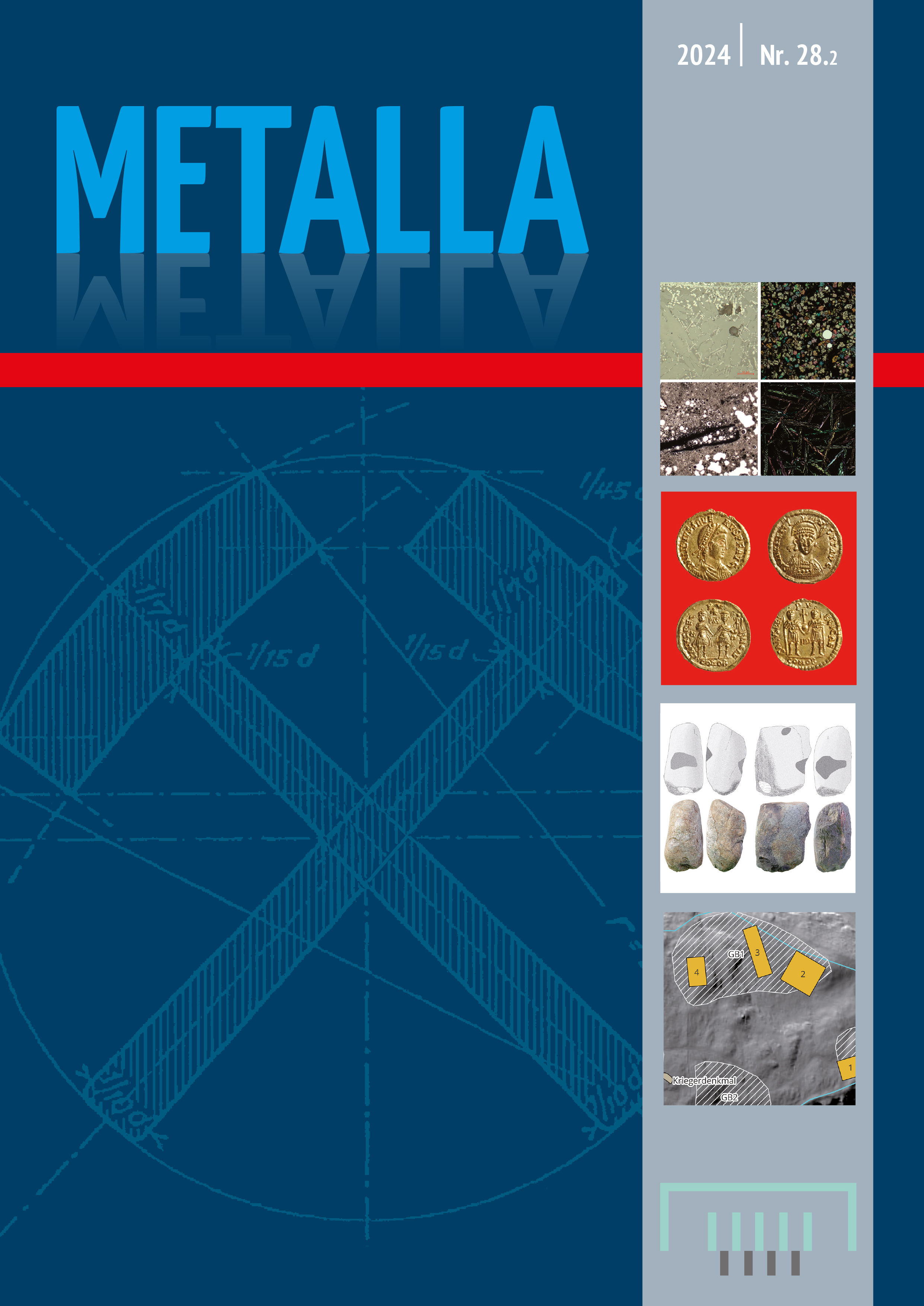
METALLA
Vol. 28 No. 2 (2024)The article of Hashemi, Nezafati and Demant presents the results of a recent short archaeometallurgical survey in Luristan, Iran. Physicochemical and microscopic analyses of finds from five slag heaps indicated several ironworking workshops. Geochemical and isotopic analyses attested that the ores probably came from geochemically similar deposits in the wider region.
The article by Lamprecht, Haas and Hiebel presents the first results of the mining archaeological prospections in the Brixen Valley and at Grattenbergl/Kirchbichl (North Tyrol, Austria), as part of the investigation of the prehistoric copper mining landscape between Hohe Salve and Hahnenkamm. The artefacts found provided evidence of prehistoric mining at three sites.
The Article of Cucini and Facchinetti is dealing with the results of the investigation of solidi of the late antique Como Treasure. The examination allowed the study of the traces of workmanship, based on observations made with an optical microscope, and to reconstruct of the operative chain used in Late Antiquity mints.
-
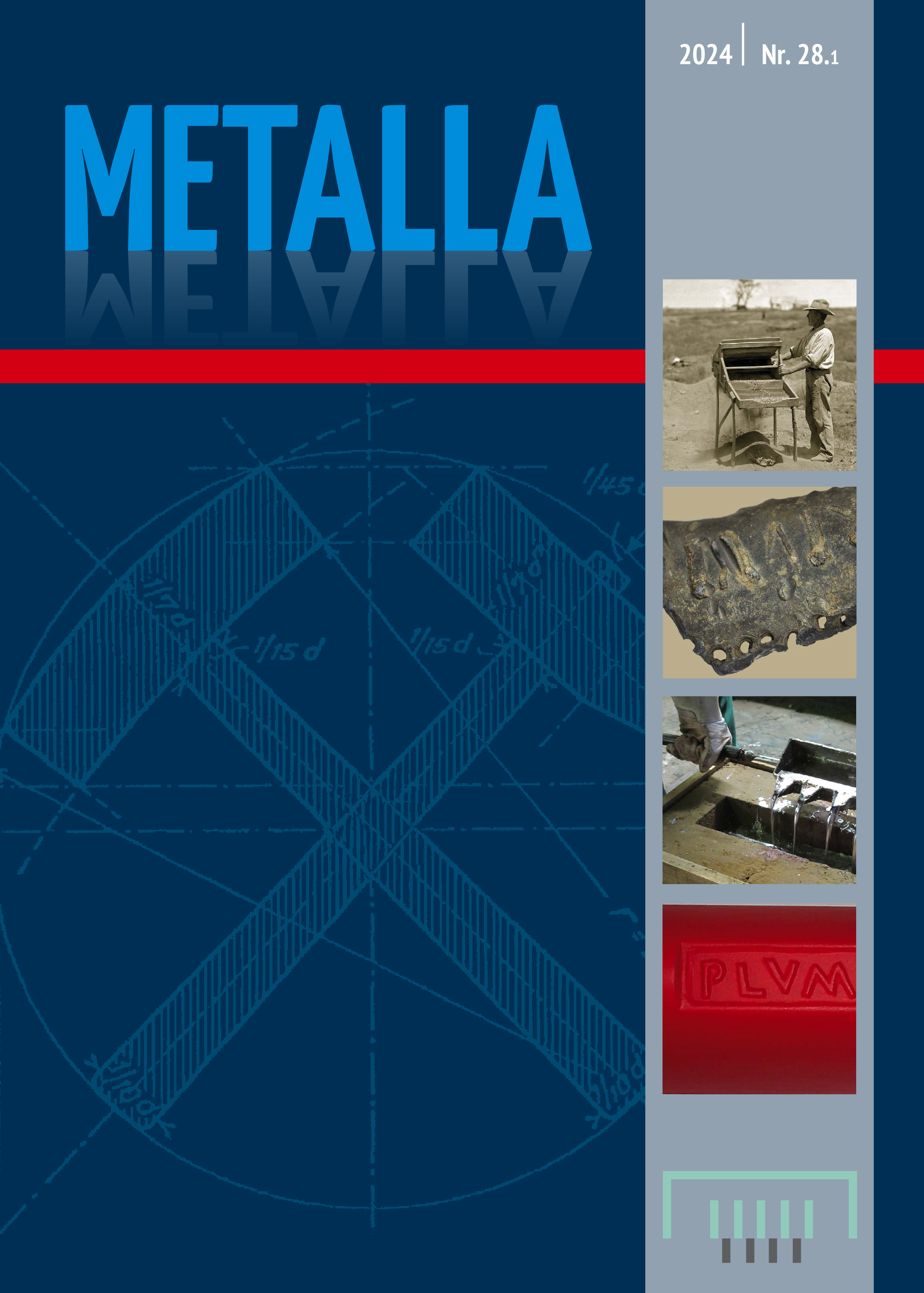
METALLA
Vol. 28 No. 1 (2024)The current paper of Bettenay presents eight 19th century case histories from well-documented Australian goldfields indicate the bonanza recoveries available to “first-movers” into previously unmined areas. The paper is a synthesis of the documentation, focussing on the earliest surviving official or verifiable accounts.
The article of Hanel and Pfeffer is dealing with the results of casting experiments to reconstruct the production of Roman lead ingots with the help of archaeological experiments and further to investigate traces of the moulding process on the ingots and the epigraphic evidence there.
The recent work of Alexandrescu and Bode provides information on the lead used in Moesia Inferior, particularly for the micro-region of Troesmis/Turcoaia, Tulcea county, Romania. The study also shows the supply routes and regions of origin from which the region was supplied with raw materials at the time.
-
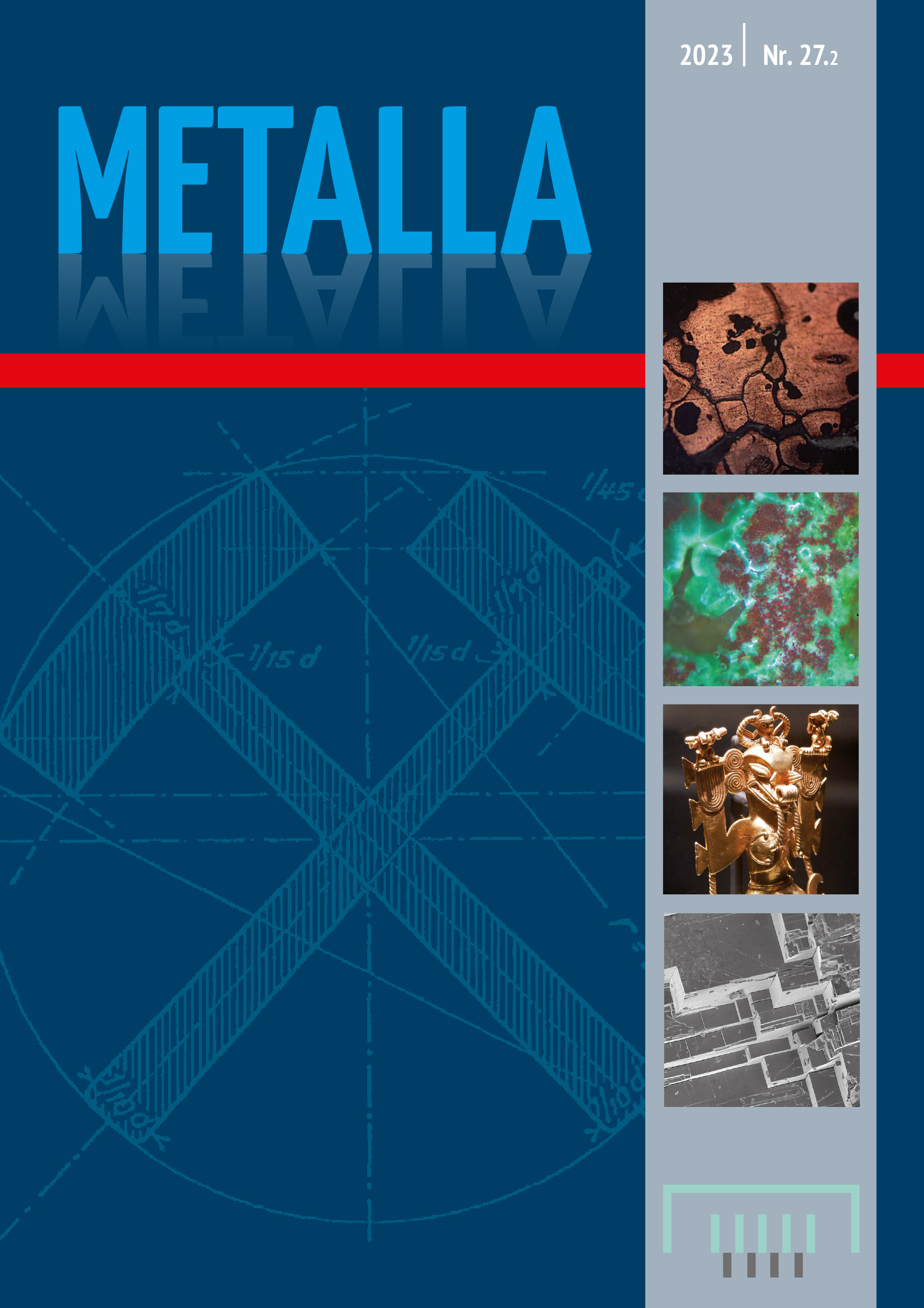
METALLA
Vol. 27 No. 2 (2023)The paper of Montero, et al. examines the use of galena, beginning in the Middle Paleolithic, before the onset of metallurgy in the Iberian Peninsula, and shows that it was a well-known raw material during the Neolithic, both in funeral and in household contexts.
The current paper of Timberlake presents a body of archaeological evidence and experimental research based on British Bronze Age mines and mining tools, which are universally relevant to the study of some of the most ancient mines and mining areas in Europe.
The study by Gassmann, et al. presents the results of the investigation of pre-Columbian gold and copper in Costa Rica. They are placed here in the perspective of New World early metallurgy and can provide a starting point for future research between Mesoamerica and the Isthmo-Colombian region.
The present study of Bode, et al. focuses on the Late Bronze Age - Early Iron Age economic cycle of the two copper districts Timna (Israel) and Faynan (Jordan) and analyses a relatively large sample of smelting remains from their main smelting sites.
-
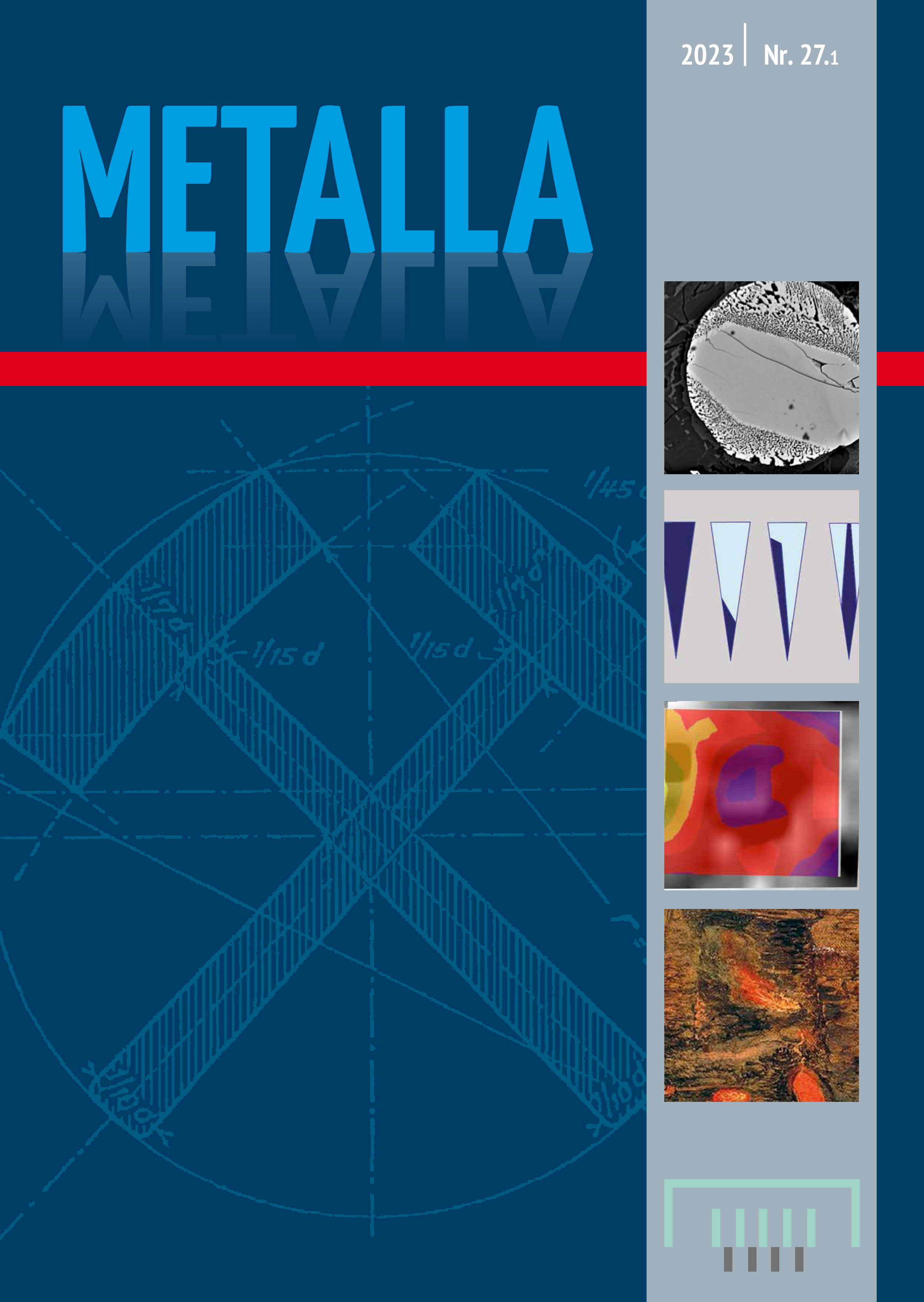
METALLA
Vol. 27 No. 1 (2023)The contribution of Sikorski, et al. is dealing with extensive prospection work by magnetometer prospection, geoelectric and pedological drillings. The combination of these methods provides a considerable benefit and creates a systematic working basis for future mining archaeologically oriented excavations.
The research of Zavyalov and Terekhova discusses the role of rural blacksmithing in the economic structure of a feudal state. The study is based on metallographic analysis of a large number of iron objects taken from archaeological sites of Ancient Rus’.
The study of Güder and Redford examines 12 knives of the medieval period (13th-14th century AD) from Kinet Höyük in Cilicia one of the most important areas of Anatolia for the history of iron production. The results indicate that besides blades made entirely of steel or wrought iron, there are examples of forge-welding steel to wrought iron in a variety of ways.
The contribution of Desai and Rehren presents two case studies of crucible steel production using iron-rich ceramics from Telangana (India) and iron-poor ceramics from Merv (Turkmenistan). The discussion focuses on the analysis of prills formed in these crucibles to understand the effect of ceramic composition and firing environment on their formation.
The present work of Tizzoni and Cucini try to answer different questions about a blast furnace painting by Jan Brueghel the Elder (1568-1625). The study is about the painter, the special motive, Flemish paintings of ironworks and the social context of the painting.
-
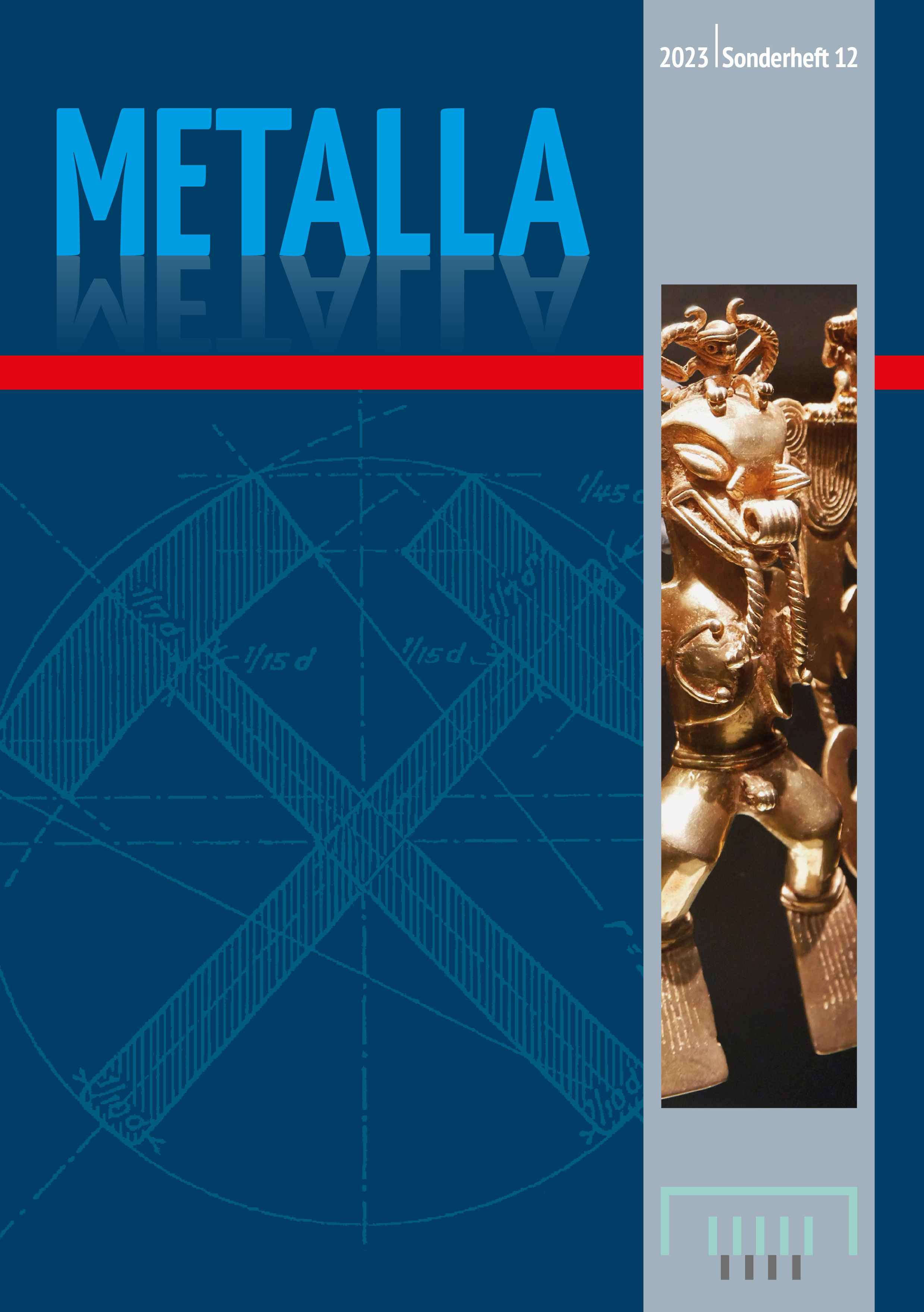
METALLA Sonderheft
No. 12 (2023)The Sonderheft 12 presents the research results summarised into abstracts from the annual conference „Archäometrie und Denkmalpflege“. The conference took place from 28.03-01.04.2023 in the Reiss-Engelhorn-Museen, Mannheim and was supported by the Curt-Engelhorn-Zentrum Archäometrie gGmbH (CEZA, organiser), the Reiss-Engelhorn-Museen, Mannheim, the Gesellschaft für Naturwissenschaftliche Archäologie ARCHÄOMETRIE e.V. (GNAA), the Bruker Nano GmbH and the Deutsche METROHM GmbH & Co. KG.
At the conference, a wide variety of topics and foci were presented and discussed during more than 39 lectures, through 5 posters slam presentations and in discussion forums from all fields of archaeometry. The main topics (conference sessions) are grouped and summarised below: General topics and methods / Biomaterial's / Pigments and painting / Metallurgy / Ceramics and clay / Glass and glazes / Stone / Conservation. The online publication of the Sonderheft 12, compared to the print version (03/21/2023), has been supplemented with the abstract by Herm, et al.
The abstracts are published under the Creative Commons Attribution-NonCommercial-NoDerivatives 4.0 International (CC BY-NC-ND4.0). Unless otherwise indicated, the image rights to graphics and photographs are held by the authors of the respective texts.
-
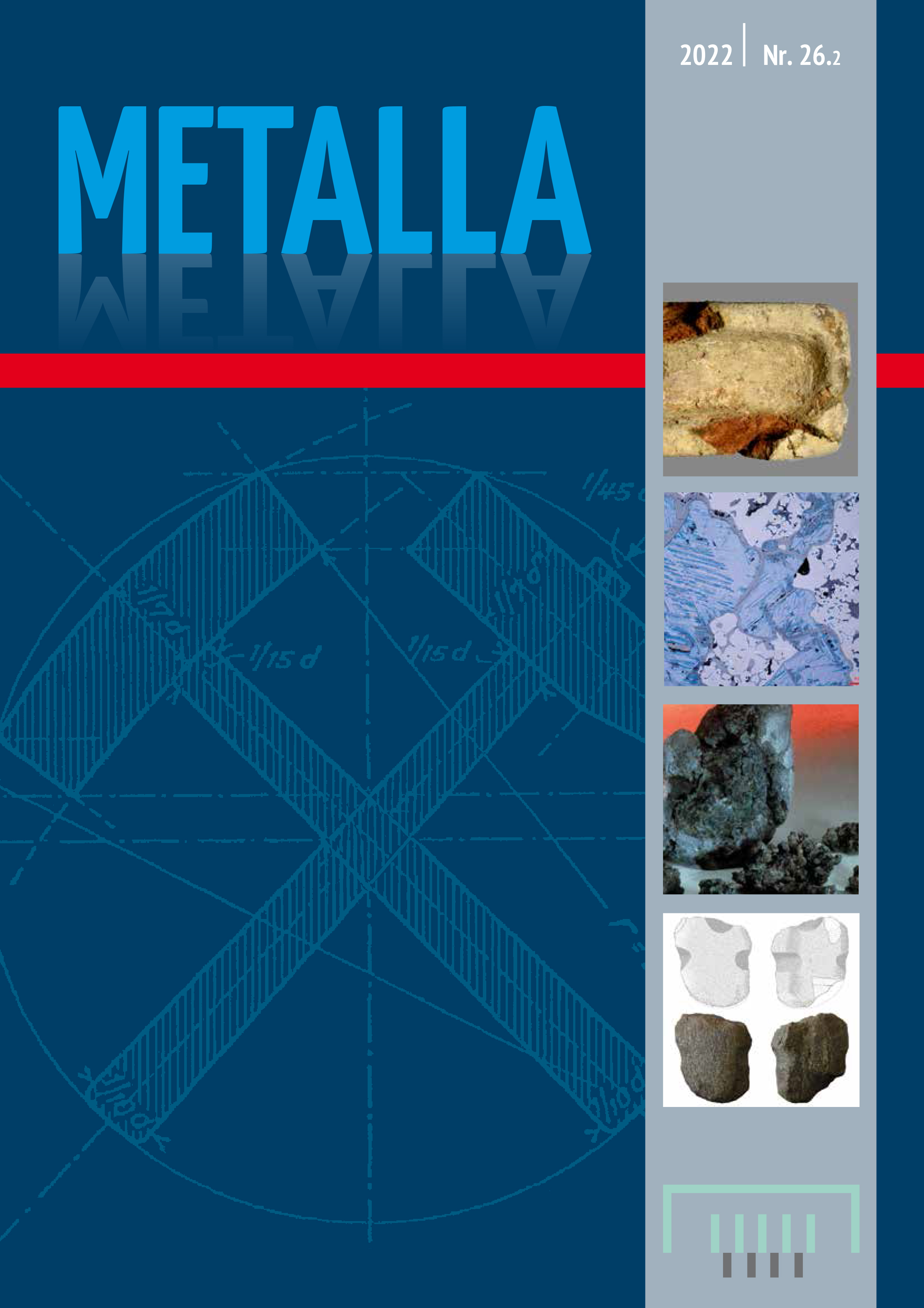
METALLA
Vol. 26 No. 2 (2022)The paper of Bettenay is dealing with the geological characteristics, mining parameters, documented historical mining rates and workforce considerations to discuss production estimates for the Early Medieval silver production at Melle, France.
The research of Heil, et al. provides insight into the archaeometallurgical remains from period VII (3900-3400 BC) of the settlement of Arslantepe (Malatya, Turkey). It aims at compiling early metallurgy through interdisciplinary scientific analysis in order to reconstruct the provenances of raw materials and deal with trade networks.
The present work of Hauptmann, et al. discusses the analyses of archaeometallurgical finds from Arslantepe VI B2 (c. 3100-2800 BC) and observations and geoscientific analyses of ores and ore deposits in East Anatolia, which are connected with this site. Furthermore, the function and technology of Early Bronze Age crucible smelting in a small scale domestic mode of production are discussed.
The contribution of Lamprecht, et al. presents the investigation of stone tools collected at prehistoric mining sites of Kitzbühel-Jochberg and Schwaz-Brixlegg in Northern Tyrol, from the late Middle Bronze Age to the Early Iron Age (1300-700 BC). The discussion focusses on their typology, material properties and the problem of terminology.
-
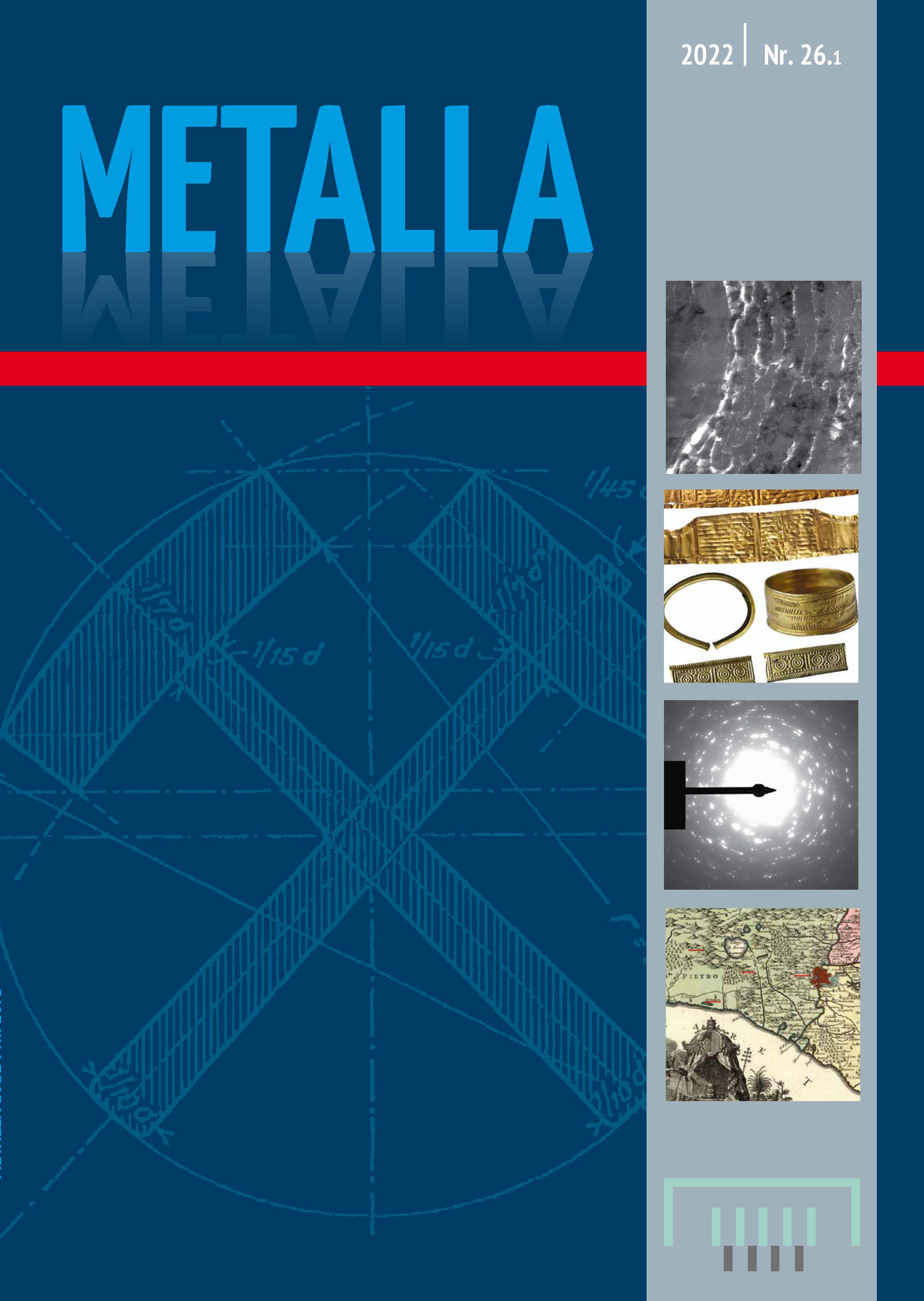
METALLA
Vol. 26 No. 1 (2022)The research by Guerra and Tissot provides further insight into the use of native gold and intentional gold alloys during the Bronze Age in Northwest Portugal. The results obtained show that from the Middle Bronze Age onwards gold containing 8-11 wt.% silver is used.
The article of Bente, et al. represents the results of the investigation of eight late medieval to early modern red beads from a cesspit of the “Fronerei auf dem Schrangen” in Lübeck, Germany. The study provides general criteria for the determination of corallium rubrum.
The article by Cucini and Tizzoni discusses the spread of the blast furnace in some parts of Europe in connection with the migration of miners, iron masters, charcoal burners and entrepreneurs from the Alpine valleys of the Lombard Iron Basin (now provinces Bergamo and Brescia, Italy).
-
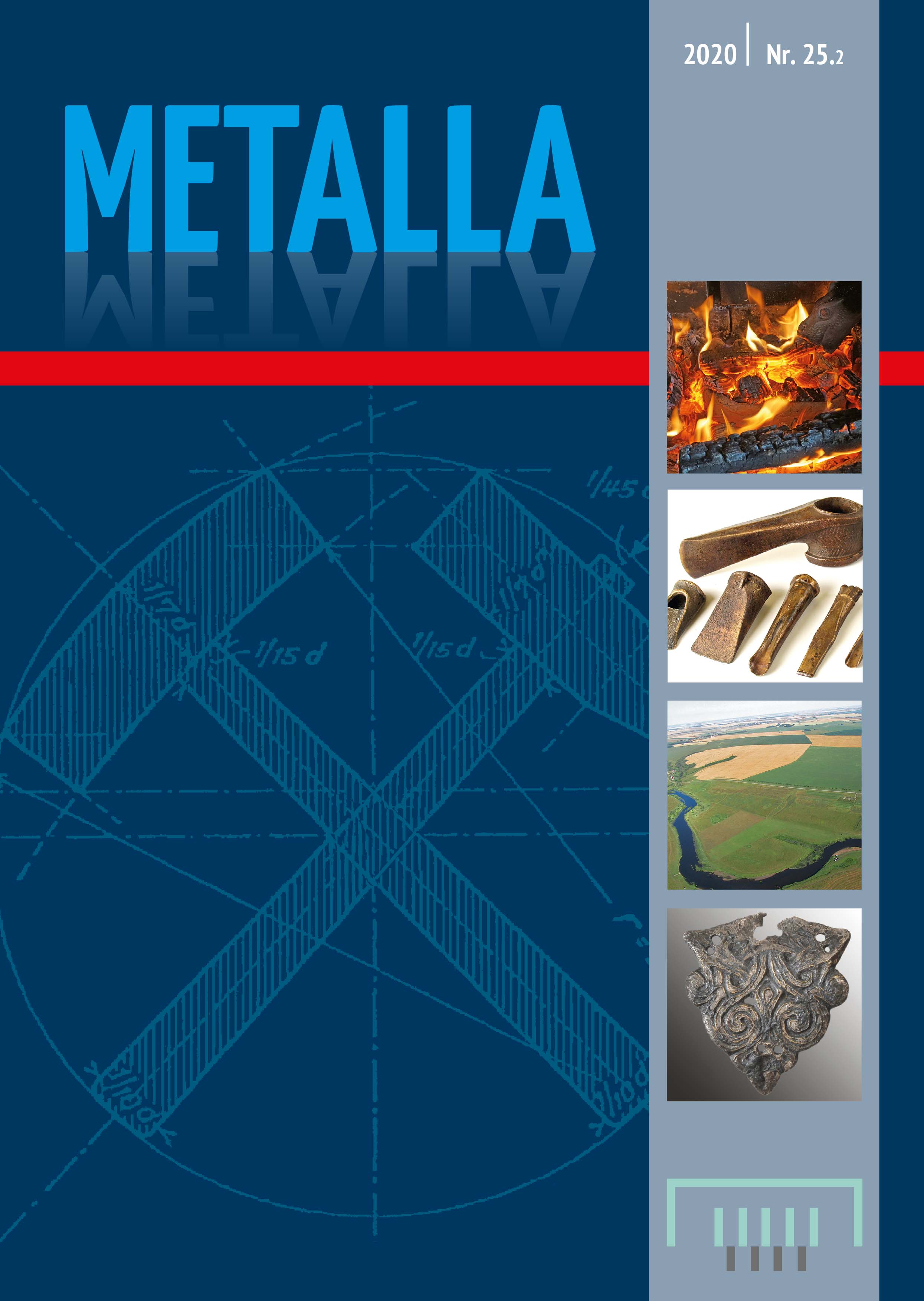
METALLA
Vol. 25 No. 2 (2020)The article of Rose, Henning and Klein describes the experimental archaeological approach to explore the fractionation of copper isotopes during smelting. The smelting experiments based on archaeological evidence from the Eastern Alps and ethnographic examples from Nepal.
The contribution of Stöllner and Gontscharov discusses the Bronze Age metal evidence in Central Asia based on a vast study of metals of from Kazakhstan to gain a better understanding about the Chernykh Model of the West-Asian-Metallurgical Province (WAMP).
The article by Chugarev, Merkel and Zaytseva represents the results of the first lead isotope investigation in this period and area. Thirty-eight non-ferrous artefacts from medieval rural sites of the Suzdal region (Kievan Rus') were characterised isotopically and elementally.
-
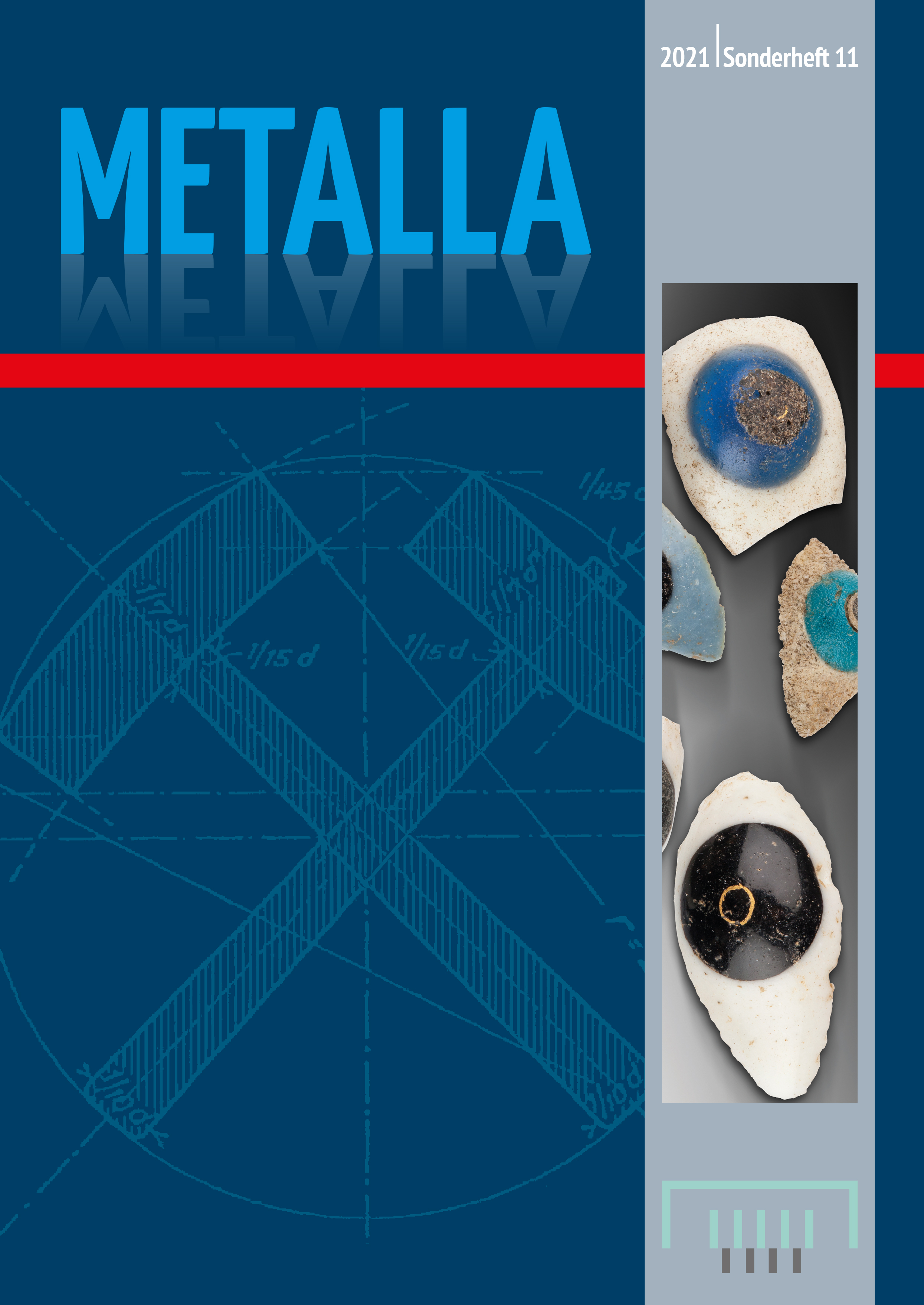
METALLA Sonderheft
No. 11 (2021)The Sonderheft 11 presents the research results summarised into abstracts from the annual conference „Archäometrie und Denkmalpflege“. The virtual conference took place from 17.-19.03.2021 and was supported by the Deutsches Bergbau-Museum (DBM, organiser), the Römisch-Germanisches Zentralmuseum (RGZM) and the Deutschen Mineralogischen Gesellschaft (DMG).
At the conference, a wide variety of topics and foci were presented and discussed during more than 36 lectures, through 13 posters slam presentations and in discussion forums from all fields of archaeometry. The main topics (conference sessions) are grouped and summarised under the topics Metals, Metallurgy / Glass, Glazes, Enamel / Ceramics / Organics, Biomineralization / Pigments, Painting / Methods / Restoration, Conservation, Cultural Heritage Preservation / Stone, Building Materials.
The abstracts are published under the Creative Commons Attribution-NonCommercial-NoDerivatives 4.0 International (CC BY-NC-ND4.0).
-
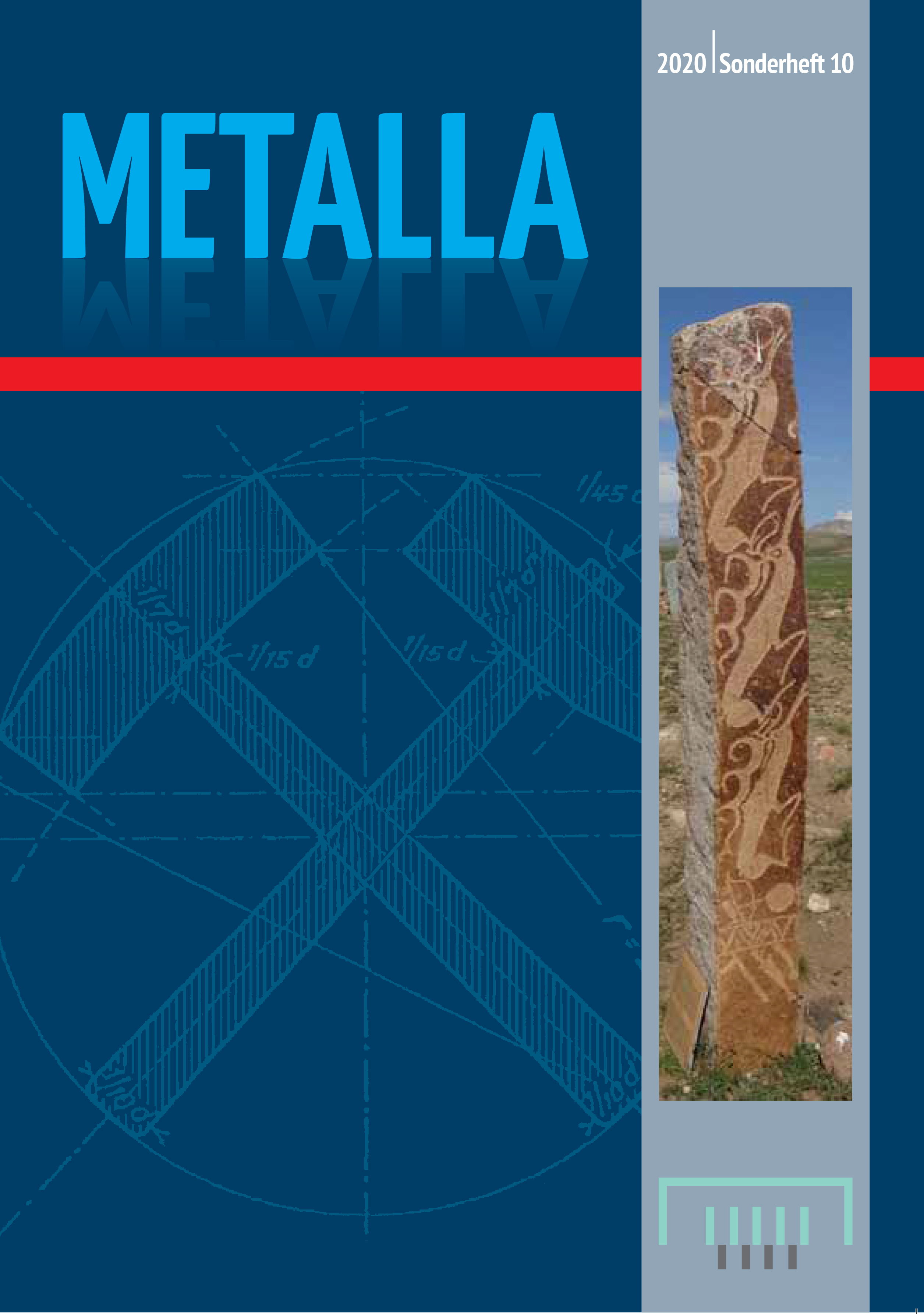
METALLA Sonderheft
No. 10 (2020)The results of the conference "Resources and Transformation in Pre-modern Societies" have been published in the Sonderheft 10. The conference has taken place online on various dates in November, December 2020 and January 2021.
The publication is part of the “Resources in Societies” project of the Leibniz PostDoc School. (ReSoc). ReSoc is a cooperation project between the Deutsches Bergbau-Museum Bochum (DBM), the Ruhr Universität Bochum (RUB) and the FernUniversität in Hagen (FUH).
The published abstracts deal with resource-based change processes on a theoretical and empirical basis in order analyse the embeddedness of social institutions and their resource-driven behaviour. This approach aims at a multivocal perspective, in which the entanglement of humans with their materialised environment becomes apparent through various practices. This includes how social institutions emerge and change through such processes in different times and eras.
The main topics (conference sessions) of the published abstracts dealing with: Life Worlds in Resource Landscapes / Skill, Embodiment and the Growth of Knowledge / Resources and Complex Systems.
-
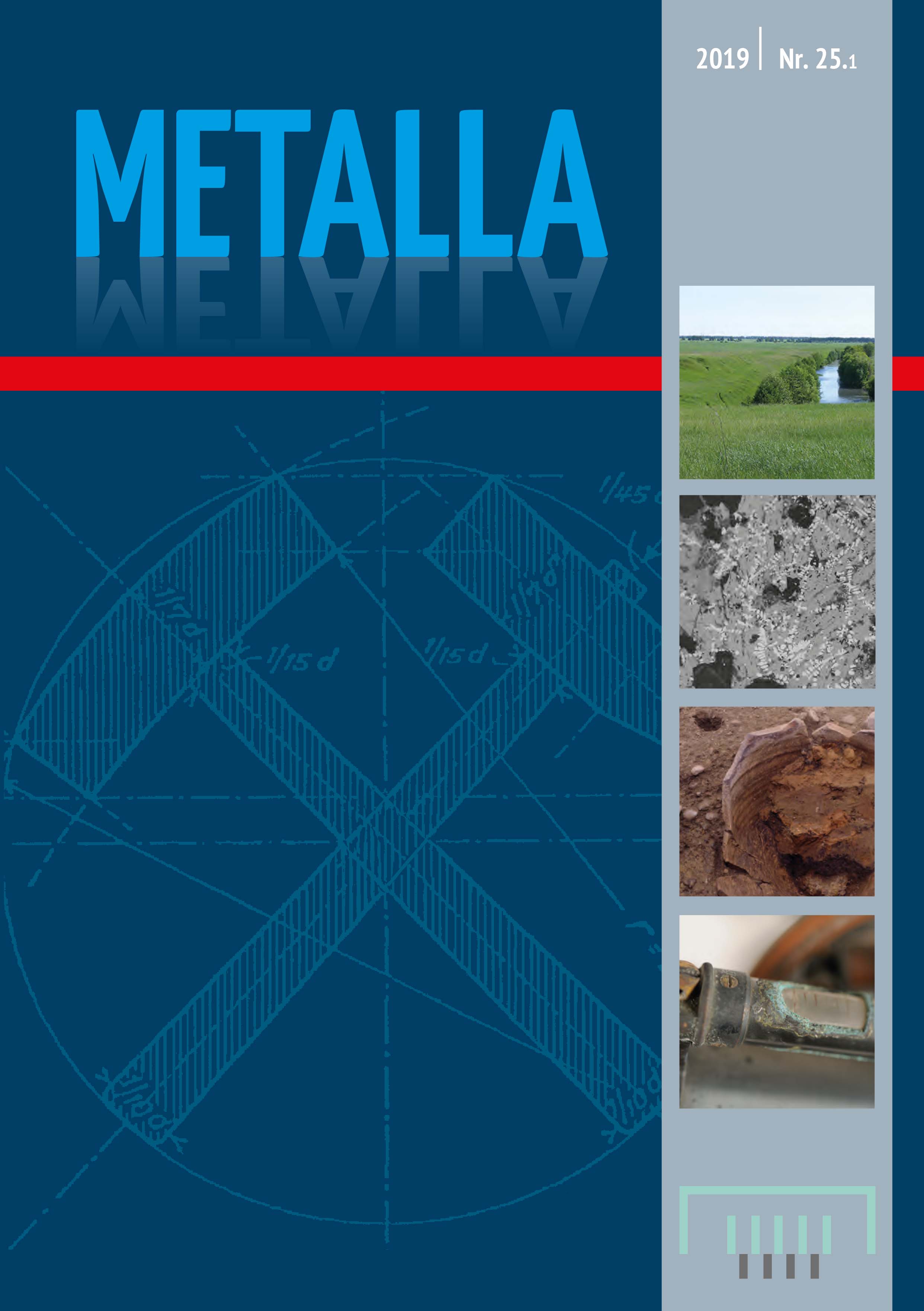
METALLA
Vol. 25 No. 1 (2019)The article of Terekhova and Zavyalov focuses on the development of medieval ferrous metallurgy in Ryzan Principality (Ancient Rus’). The presented investigation localized a rural metallurgical complex that supported the handicraft production of the Principality.
The contribution of Cucini deals with the metallurgical activities in the Celtic Metalworkers’ District of Mediolanum. For this study, the remains of 23 metallurgical workshops, which were in operation both before and during Romanisation, were investigated.
The contribution of Schorpp, et al. discusses the glass induced metal corrosion on several finds in the collection of the Deutsches Bergbau-Museum Bochum. This phenomenon occurs together with humidity and oxygen from the air. Electrolytes that form during glass decay can induce the corrosion.
-
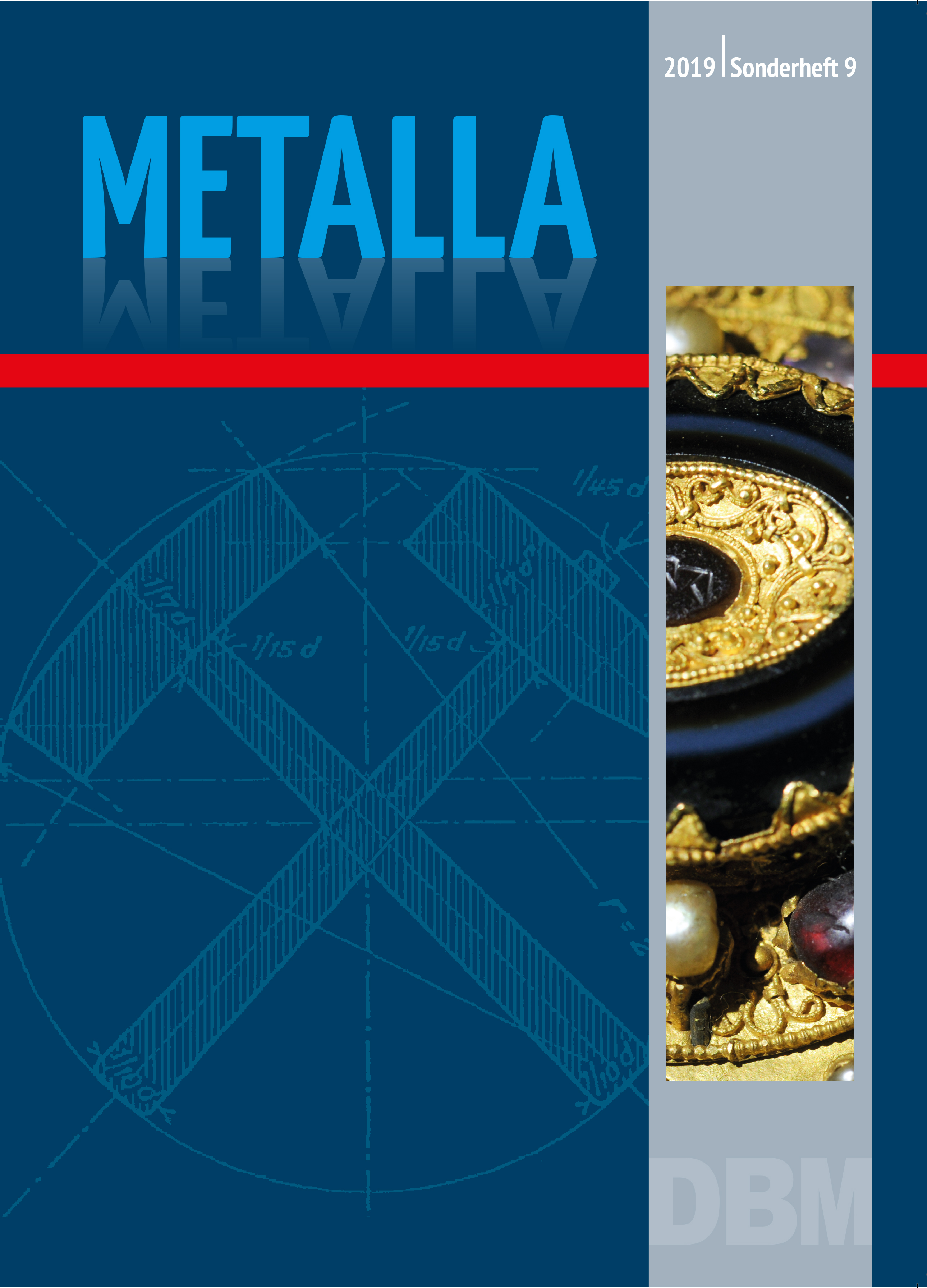
METALLA Sonderheft
No. 9 (2019)The Sonderheft 9 presents the research results summarised into abstracts from the annual conference „Archäometrie und Denkmalpflege“ at the Academy of Fine Arts in Vienna, from 11.09.-14.09.2019.
At the conference, a wide variety of topics and focal points were again presented and discussed during the more than 35 lectures and about 28 posters from all areas of archaeometry. In the special issue, these are grouped and summarised under the topics General, Methods / Stone / Pigments / Conservation, Restoration / Glass / Ceramics / Biomaterials and Metal.
The abstracts are published under the Creative Commons Attribution-NonCommercial-NoDerivatives 4.0 International (CC BY-NC-ND4.0).
-
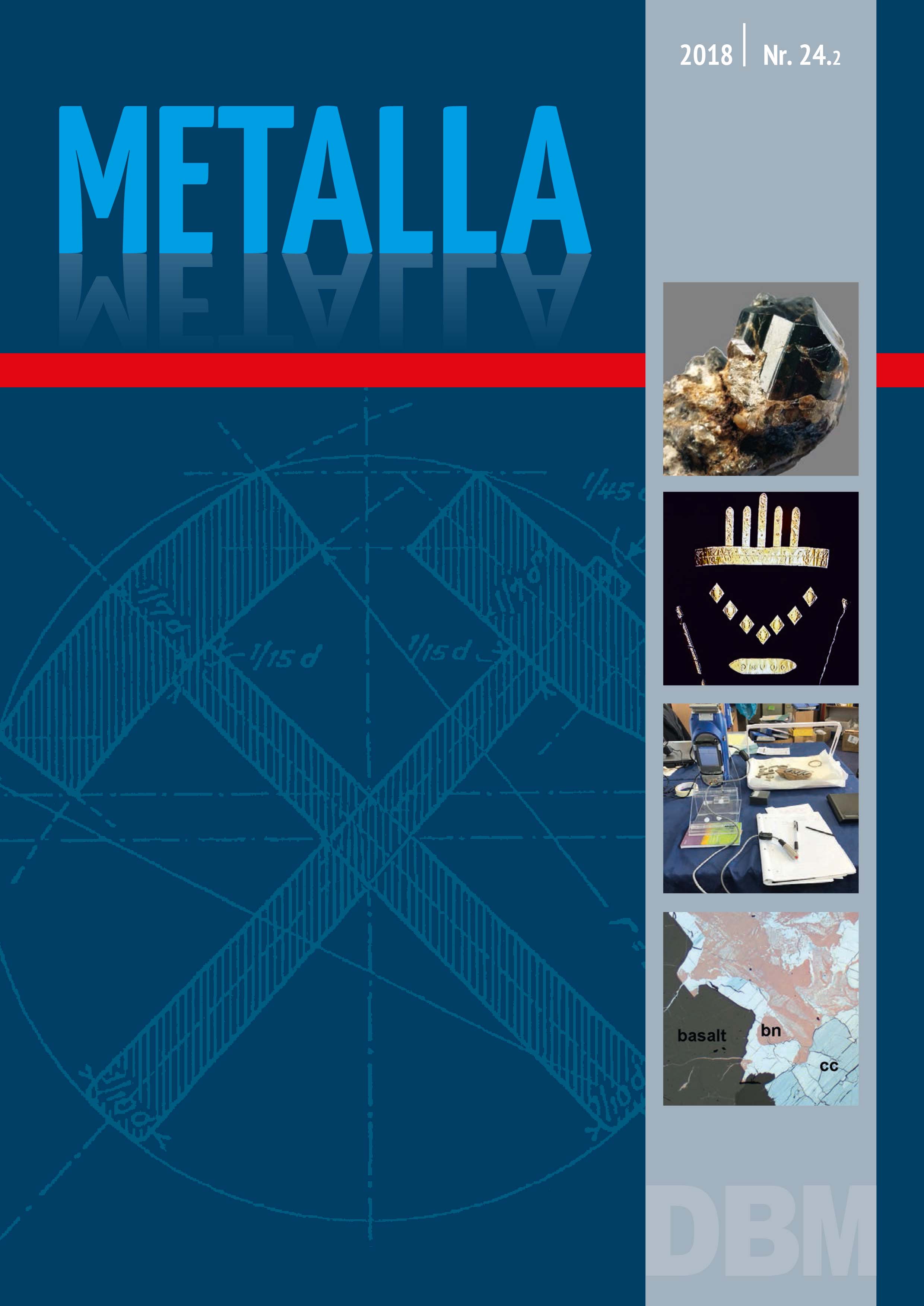
METALLA
Vol. 24 No. 2 (2018)The contribution of Nessel, et al. focuses on the investigation of tin isotopic data of bronzes from the 3rd and 2nd millennium BC from Central and Southeastern Europe the Aegean and Mesopotamia. The presented analyses indicate a possible reorientation of exchange routes in Europe during the 2nd millennium BC.
The article of Pernicka discusses the weighting of different methods of investigation using the example of gold finds from Bernstorf when the results of scientific investigations do not agree with the expected archaeological results.
The contribution of Pearce discusses the negative consequences of the current popularity of pXRF analysis for copper-based alloys. He points out various misunderstandings by archaeologists material scientists and curators of the nature and significance of pXRF.
The article of Stöllner points out, by discussing various deposits and mining districts, that it requires a holistic approach to understand the ancient use of mineral deposits, as well as a broad vision and a close and respectful cooperation of all involved disciplines.
-
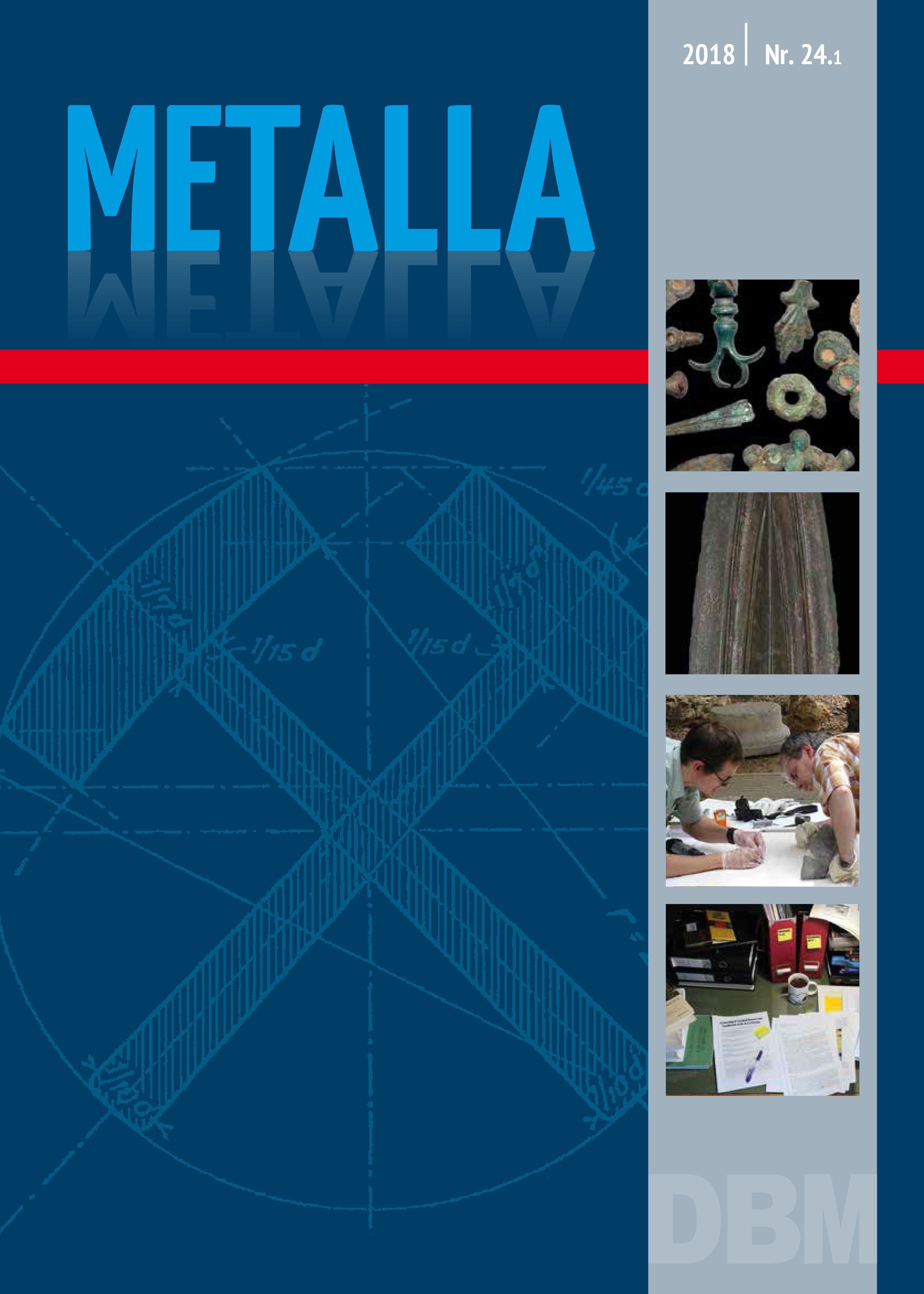
METALLA
Vol. 24 No. 1 (2018)The article of Danielisová, et al. deals with metal objects of the Iron Age oppidum Třísov in the Czech Republic. These objects have been subjected to geochemical analysis, and conclusions regarding the metal supply at this settlement.
The contribution by Kan-Cipor-Meron, et al. presents the results of the analyses of MBA II daggers from the Levant to discuss the interrelationship of form and alloy and to gain information about technology and the supply of raw materials.
The contribution of Rothenhöfer, Bode and Hanel shows the convergence of natural science, ancient history and archaeology. The article discusses the analysis and historical context surrounding a special ingot with the inscription metallo Messallini.
The article of Sabatini and Mödlinger presents and discusses the results of an anonymous survey among archaeometallurgists that explores many aspects of this scientifically and socially diverse field.
-
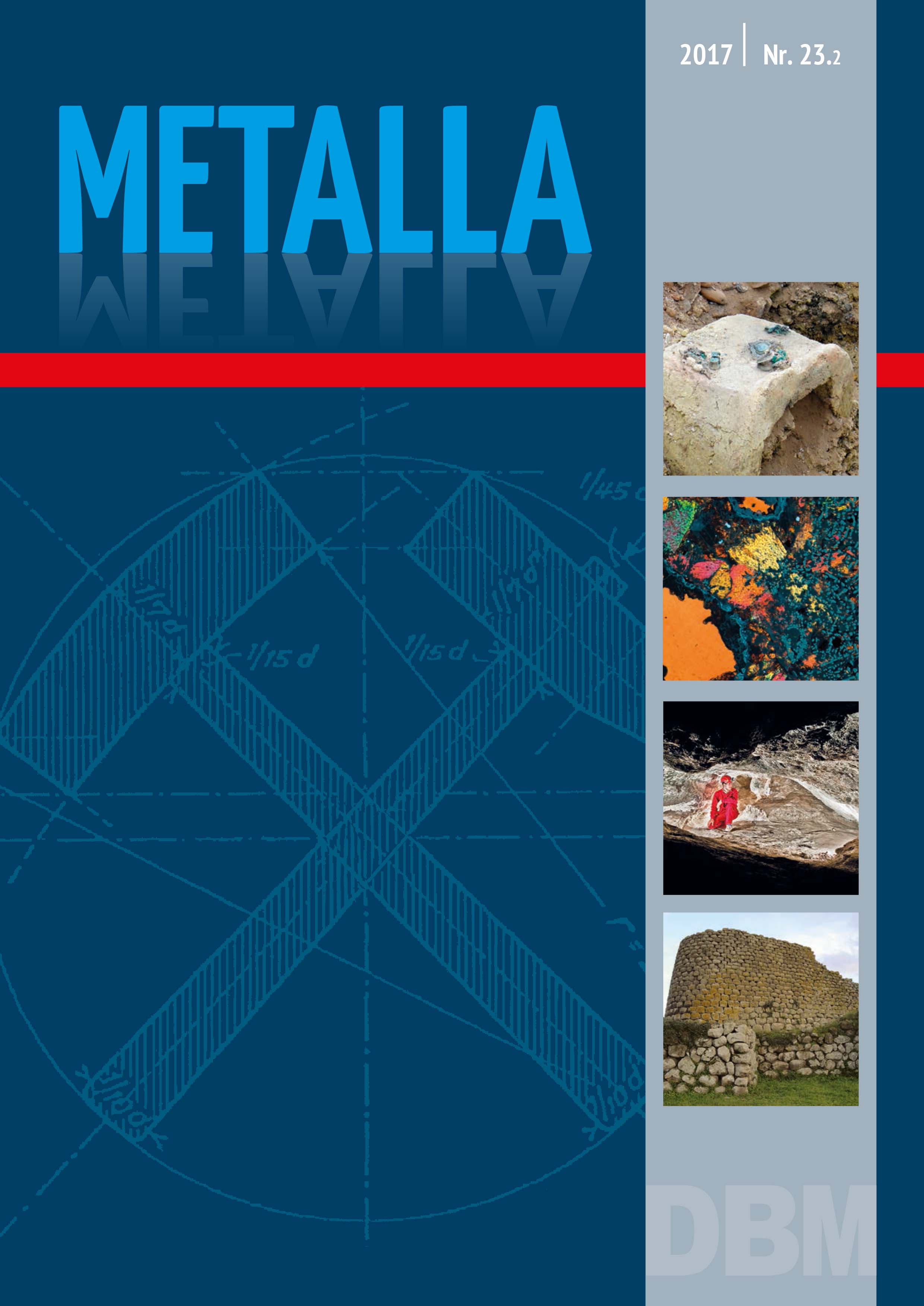
METALLA
Vol. 23 No. 2 (2017)The contribution of Güder, Gates and Yalçın investigates iron smithing technology through metallography and slag analysis from the Iron Age period at Kinet Höyük, Turkey.
Recent research on the geology of the copper deposit and archaeological connections to key Bronze and Iron-Age settlements and workshops in central Iran are presented in the contribution of Nezafati and Stöllner.
The contribution of Parjanadze and Bode investigates these silver objects and other Roman period silver from Georgia through elemental and lead isotope analysis.
The contribution of Pearce reviews the evidence of the earliest use of metals and metallurgy from settlements and tombs on sardinia, renowned for its rich copper and silver resources.
-
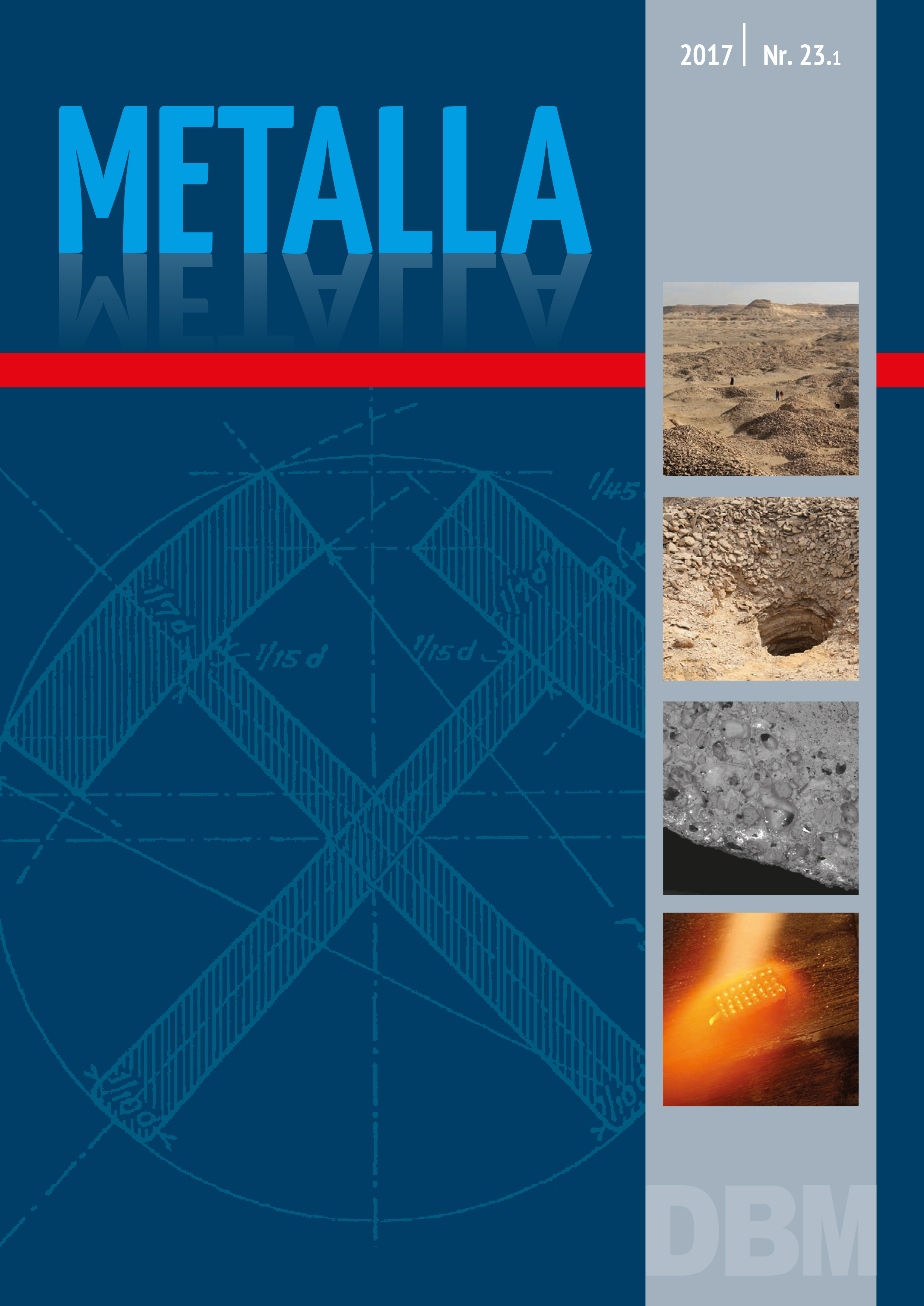
METALLA
Vol. 23 No. 1 (2017)The article by Klaunzer, Mustar and Köhler presents the preliminary results of surveys and the first excavation in the mining landscape of Wadi el-Sheik, Egypt, where chert was mined in prehistory and during the Pharaonic Period. There, both opencast and underground mining methods were used to remove the chert.
The contribution by Merkel, Schlotfeldt and Struckmeyer discusses features of the technical ceramics and their implications for the meaning and organization of metallurgy at the Roman Iron Age beach market site of Elsfleth-Hogenkamp in northern Germany.
The focus of Loepp and Maass research is on the technical goldsmithing challenges surrounding the fabrication of a granulated gold bead its experimental replication. The remarkable gold bead, entirely constructed of 96 granules, was discovered during the excavation of a tomb of the Umman-Nar culture in Oman.
-
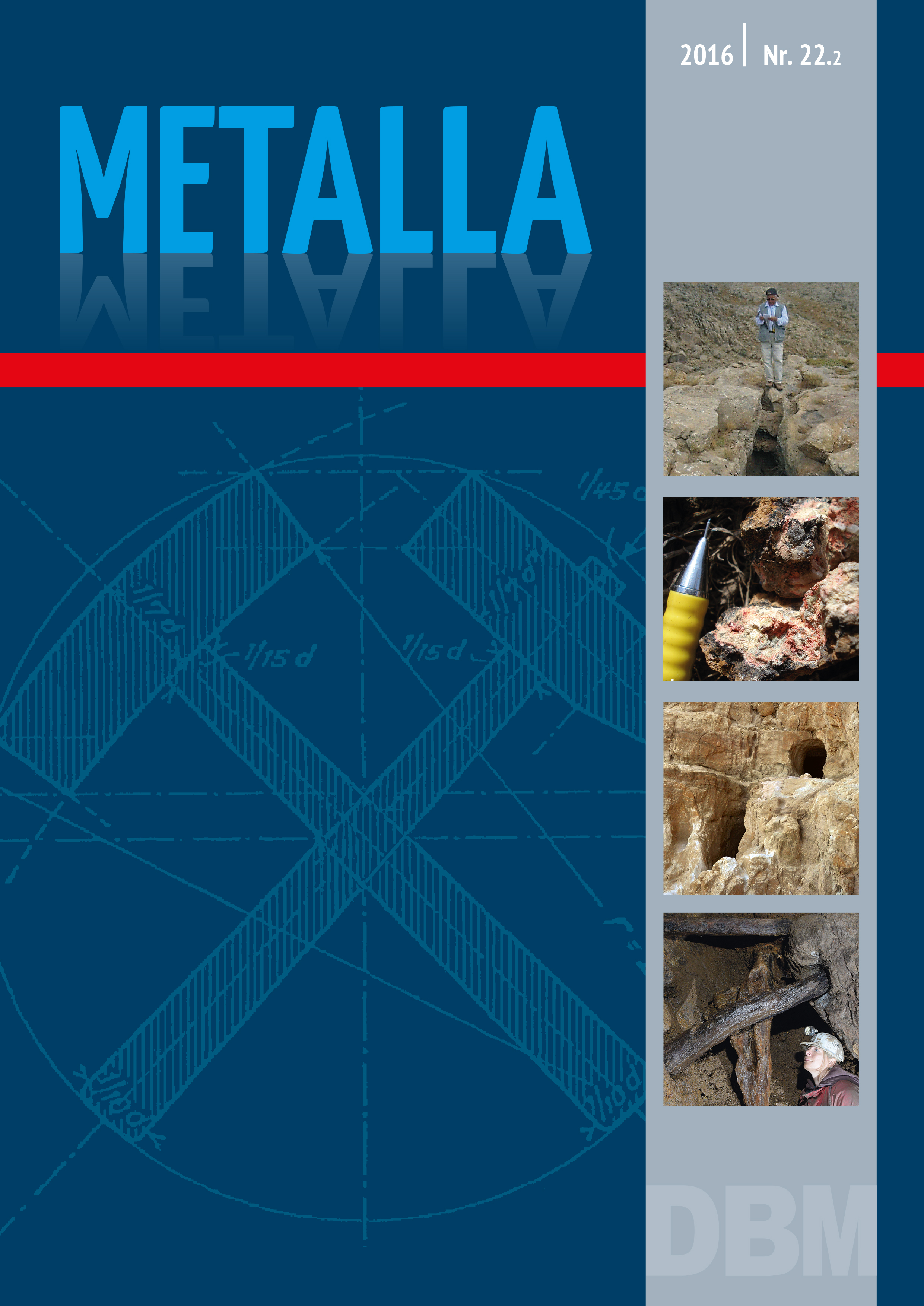
METALLA
Vol. 22 No. 2 (2016)The contribution of Momenzadeh, et al. introduces briefly the geology and mineral resources together with the traces of ancient mining and ore processing in the area of Takht-e Soleyman. Some archaeological sites were found and documented for the first time during this investigation.
The research of Ketelaer and Hauptmann explores the questions of whether the copper ore from Wadi Amram could have been used for the production of the copper artifacts from the Chalcolithic settlements Tall Hujayrat al-Ghuzlan and Tall al-Magass or if it can be clearly excluded.
In the study of Zeiler, Garner and Golze the Alter Mann Victoria mine and two others in the region were investigated as part of an ongoing, multifaceted project to explore the meaning and importance of the non-ferrous metallurgy in northern Siegerland in the High Middle Ages.
-
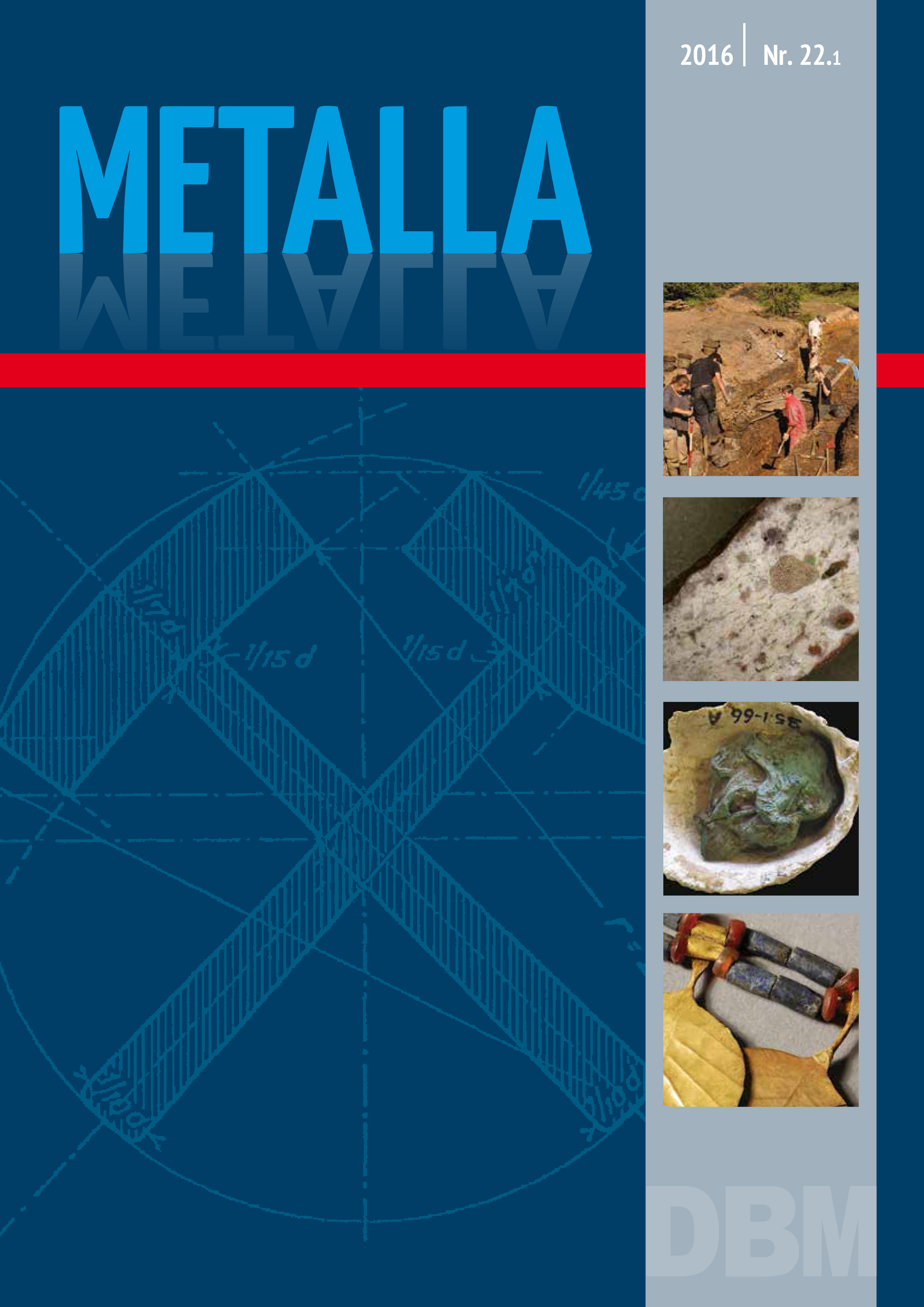
METALLA
Vol. 22 No. 1 (2016)The contribution of Rashidian is dealing with the results of the Excavations from the Middle Bronze Age copper ore beneficiation at Troiboden in the Austrian Alps. The anthropogenic sediments resulting from ore beneficiation and subsequent weathering processes were studied with a geoarchaeological approach and give an indication that the beneficiation process were more effective than previously thought.
The article of Merkel examines the copper-based metallurgical remains from Carolingian/Ottonian levels of Dortmund and Soest. They were analysed by microscopy, high-resolution ICP-MS and lead isotope analysis to reveal information about some of the earliest archaeological evidence for medieval brass production in Western Europe.
The contribution of Hauptmann presents the results of cosmetic pigment analyses from the Royal Tombs of Ur, Mesopotamia, 3rd millennium BC. Most of the cosmetic pigments were stored in shell containers. They are composed of a complex mixture of bluish-greenish minerals, bone white and fats or oils. The chromophores are thought to be produced from acid or wine in copper vessels making verdigris.
In this issue, METALLA presented new investigations, new results from the examination of metal artefacts and other archaeological finds from the Ur-Workshop in May 2015 at the Deutsches Bergbau-Museum Bochum (pages 77-145). The scientific questions addressed in this project focusses on the fallowing aspects. Are the technologies and innovations seen in the Ur metalwork a manifestation of the enormous political and cultural development of the urban settlements of Mesopotamia in the 3rd millennium BC? Were these production techniques imported from elsewhere and where did the metals and other materials come from? Did they come from lands connected to Ur by its far-reaching trade contacts? To answer these questions, ressources, cultures and civilizations within distances of several thousands of kilometres in all directions from Mesopotamia have to be taken therefore into consideration.


